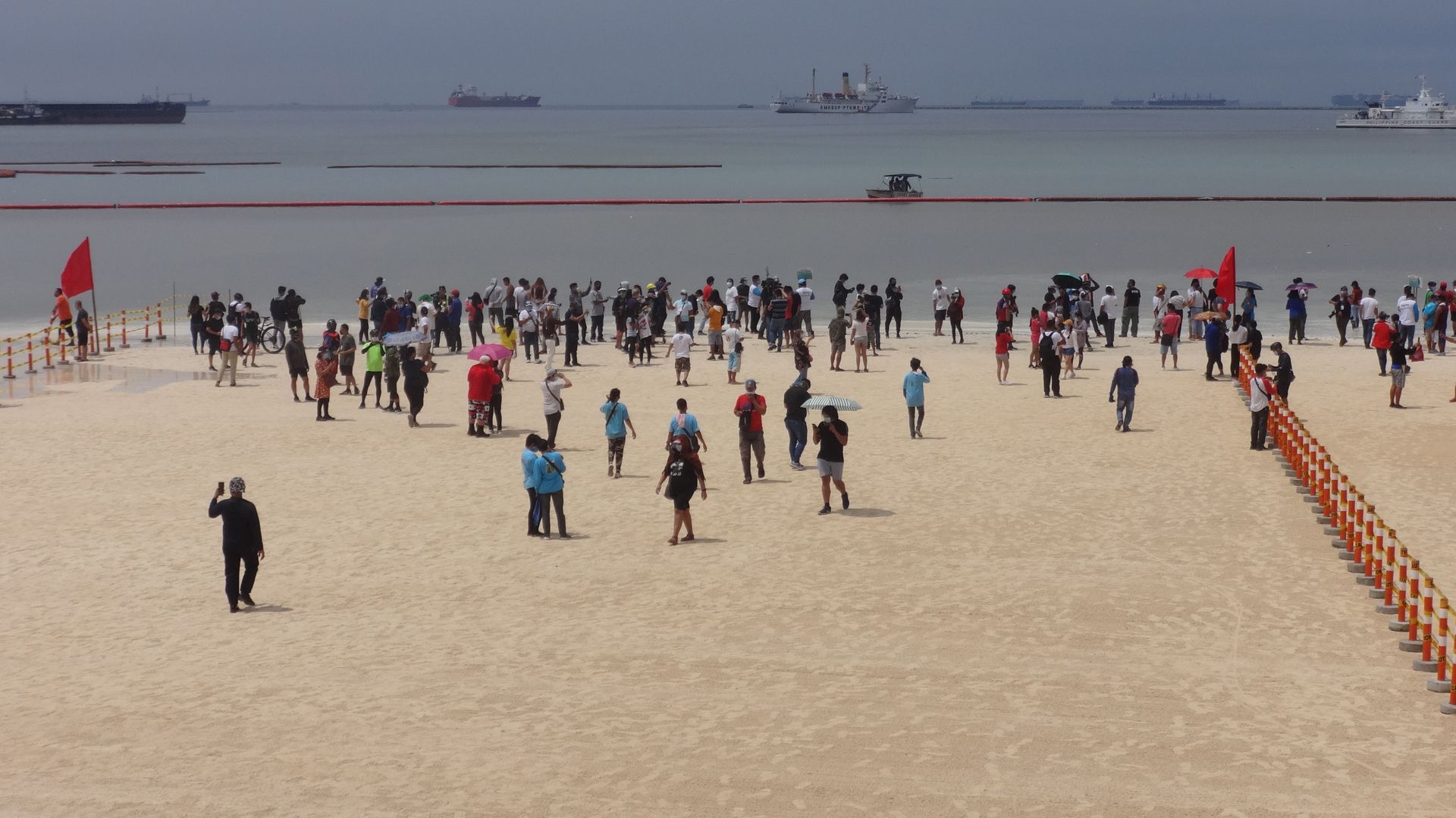Image by Thomas Tangelder from Pixabay
There’s nothing more exhilarating than drinking a cold bottle of San Mig while your feet caresses powdery sand
By Jing Montealegre
When the ban on the abusive beach structures on the white-sand beaches of Boracay was put in place, many quietly cheered on the sidelines because the hotel and restaurant owners fronting the beaches had commandeered a good portion of the beachfront, building permanent and semi-permanent structures on it, as if they owned the damn beach. It was abusive and it was a disgrace.
The ban did restore the beachfront to its original uncluttered state of some thirty years ago, but it also crammed tourists inside crowded bars and air-conditioned restaurants - and sadly denied them the pleasure of dining and wining with the sands of Boracay under their feet.
As the world encourages al fresco dining in light of the worldwide coronavirus outbreak, keeping customers inside enclosed places endanger them unnecessarily, and authorities at the DOT and the LGU could review the ban on portable tables, chairs, and beach beds on the beachfront outside the restaurants and bars. In any case, these are temporary structures to be taken in and out of the establishments at the end of business hours.
The 30-meter easement rule instituted by the DENR and the Boracay Inter-Agency Task Force covering such prohibition (for very good reasons) could be eased for the time being, while the worldwide pandemic rages on. It’s just sensible and healthy to do so.
The dumping of dolomite sands on the Baywalk of Manila bay, on the other hand, is a different matter altogether. The controversy started when the Environment Department launched this project totally in bad taste (and bad timing, too) with the issue of Covid devastation still foremost in the minds of people.
Ignoring probable criticism, the DENR went ahead with the project anyway, trucking in dolomite sands from far-off Cebu and dumping these on the Baywalk to simulate the white-sand beaches of Boracay, and provide the public and local residents with the added attraction. Questions on the timeliness of the project, the health hazards of the artificial sand, and its effect on the eco system were raised soon enough.

The controversy would have gone away eventually had not a mini storm struck and dumped the black sand of Manila bay over the white dolomite sand, turning it gray-white. Scrambling once again to defend the project, an undersecretary of the environment bureau got himself into hot water after a thoughtless rant at a UP marine science institute expert critical of the project.
(Maybe the solution is to ban storms altogether, and controversies like this one could be swept under the sand, so to speak.)
Beach nourishment is an old practice according to Filipino engineer Edgar Mana-ay, writing in the Daily Guardian. “There are unfounded and ignoramus fear by activists that dolomite as the filling material is a health hazard. Far from the truth…” He believes that the public brouhaha “comes from those who heard the term beach nourishment for the first time because their only exposure is body nourishment thru the intake of multi-vitamins tablets,” he admonishes, with a jive at activists.
Beach nourishment projects like the Baywalk project, however, is anathema to Andrew Cooper, a professor of coastal studies, who was quoted in an article in Forbes: “Beach nourishment is like a sticking plaster. It does not remove the underlying reasons for erosion. Worse, it provides a false sense of security. In future, as sea levels rise, it will demand bigger and bigger volumes of sand to be effective.”
Dolomite mining, however, is smalltime compared with the sand wars raging worldwide. A recent documentary on Aljazeera showed that sand - natural sand from the sea and inland waters - is “one of the most-consumed natural resources on the planet,” and the world is running out of it as countries compete for this precious commodity to enable construction and build cities. Fueling the construction booms around the world, the high demand for sand is threatening the depletion of the world’s reserves and its uncontrolled use is causing ecological and environmental damage.
Sand is such an essential resource and it is used in daily life in many ways. “We don’t think too much about it, but you can’t live without it,” says Kiran Pereera, the founder of SandStories. Org.
In the battle between the white-sand beaches of Boracay versus the Baywalk of Manila Bay, the former wins hands down. And people I know, a few drinking buddies among them, swear to the exhilarating thrill of having a glass of cold San Mig with toes buried in the warm sands of Boracay.
If you liked what you just read and want more of Our Brew, subscribe to get notified. Just enter your email below.


Related Posts
ChatGPT Facepalms, Responds to Bill Gates
Jun 24, 2025
Shifting Lines of Power in the 2025 Philippine Midterm Elections
May 22, 2025
The Our Brew Articles You Loved Most this Year
Jan 14, 2025